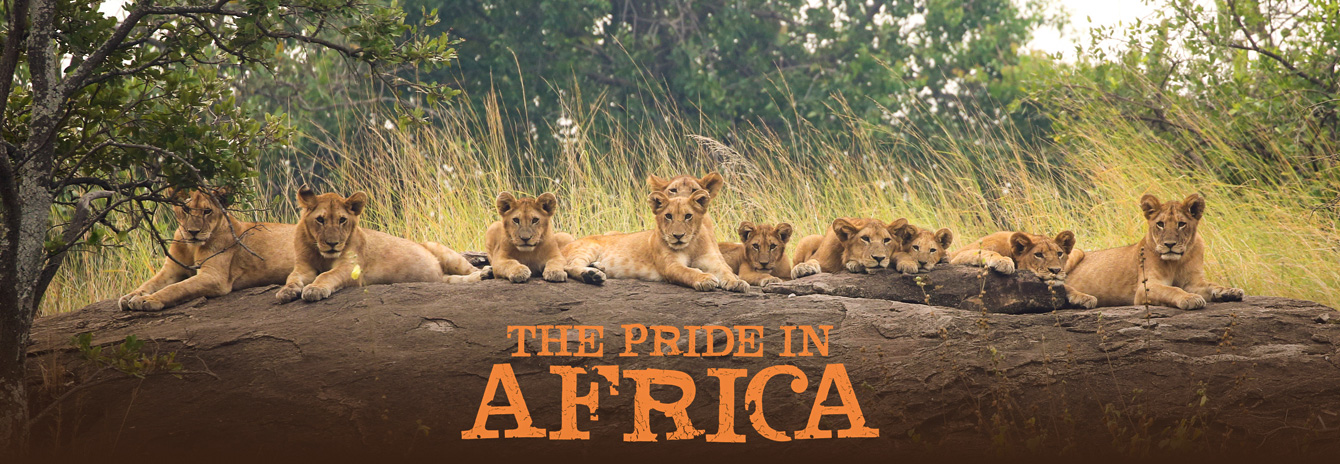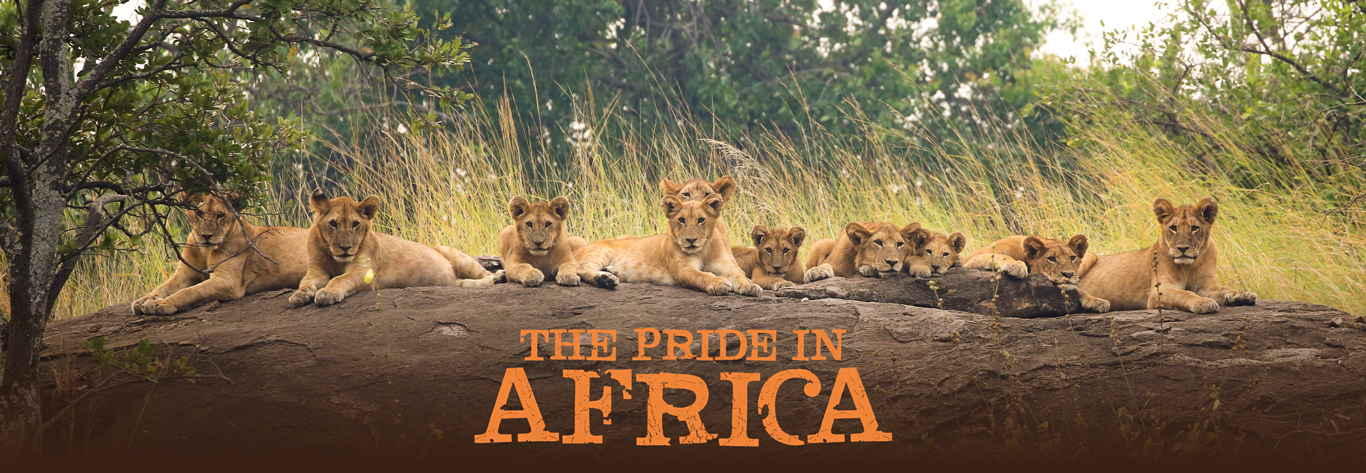
Africa
-

A bird’s eye-view
Africa
A bird’s eye-view
The African buffaloes, also called Cape buffaloes, are known to kill more hunters in Africa than any other wildlife animal. Many stories are told of how hunters who have wounded them have been ambushed. Adult males are black or charcoal grey in colour while the females have a slight tinge colour. They prefer open and wooded savanna with suitable grass cover, and need water every day. They are best seen during the African summer when grazing is rich.
-

On the lookout
Africa
On the lookout
Females are the main hunters of the pride. They form hunting parties to round up the fast animals in their habitat. They boldly go toe-to-toe with animals much larger than them and are capable of killing animals that weigh up to 1,000 lbs. To kill their prey, the lionesses make use of their powerful jaws to snap the prey’s neck or strangle it to death.
-

United we stand
Africa
United we stand
It is possible to differentiate Masai giraffes from other species mainly by the design of their fur which is stamped with irregular patches. They live in herds that are quite small and are tolerant of each other, especially the females. The Masai giraffes spend most hours in a day feeding. They can spend 16 to 20 hours a day eating or looking for food.
-

Neck and neck
Africa
Neck and neck
The male Masai giraffes tend to be aggressive when it involves dominating the group or for mating rights. They do not often interact unless they are looking to mate. Most males start mating when they are seven years old as they have to earn that right fighting with other bulls. This dominance display is performed by hitting their necks around each other in a battle called “necking†which can go on for a good 30-60 minutes.
-

We’re all ears
Africa
We’re all ears
African elephants are the world’s largest land animals. The other notable feature of African elephants is their very large ears, which allow them to radiate excess heat. Since these elephants live where the sun is blazing hot, they use their trunks to keep them cool by squirting a trunkful of water over their bodies, followed by a sprinkling of dust that creates a protective layer on their skin.
-

Getting a jump start
Africa
Getting a jump start
A member of the antelope family, the blue wildebeest earned its name for its menacing appearance due to its large head, shaggy mane, pointed beard and sharp curved horns. They are a reliable source of food for the menacing predators of the African savanna like lions, cheetahs, wild dogs and hyenas.
-

A hop, skip and jump
Africa
A hop, skip and jump
The blue wildebeest’s broad mouth is adapted to bulk feeding on short grass. Their dependence on short grass together with their need to drink at least every other day limits their stay to moist grasslands and areas within easy reach of water. Wildebeest are known to be noisy. They constantly emit low moans and if disturbed snort explosively.
-

Water off the back
Africa
Water off the back
Wildebeest communicate visually, vocally and through olfaction. A male’s bellow can carry up to 2 kms. They rub their preorbital glands and faces on the behinds of others for social contacts. Sometimes they also sniff and rub their nose and neck on other individuals. They are pure grazers and need water at least every day or two during the dry season, hence, withdraw to longer grasslands in areas of higher rainfall and permanent water during the dry season.
-

In deep waters
Africa
In deep waters
Wildebeest are continuously on the move as they seek favourable supplies of grass and water. They often string out in long single columns when on the move. Although they have no camouflage colouring, they get protection from gathering in large herds, as they are the preferred prey of lions, hyenas and cheetahs. If a calf loses its mother it will follow whatever is closest, even a predator.
-

Say cheese
Africa
Say cheese
Africa’s largest crocodile, the Nile crocodile, can reach a maximum size of 20 feet and weigh up to 1,650 lbs, and has earned the reputation of being a vicious man eater. Most of its lower teeth are visible when its mouth is closed. One unusual characteristic of this fearful predator is its caring parental nature. Where most reptiles lay their eggs and move on, mother and father Nile crocodiles ferociously guard their nests until the eggs hatch.
-

Make hay while the sun shines
Africa
-

Life is a beach
Africa
-

Peli-can fly high. Can you?
Africa
-

‘Kumbh ka mela’ of the flamingos
Africa
-

At the zebra crossroads
Africa
-

‘Aaj kuchh tufani karte hain’
Africa
-

It’s lonely at the top
Africa
-

Look what I found
Africa
-

Bird in a dilemma
Africa
-

Awww…so cute
Africa






















